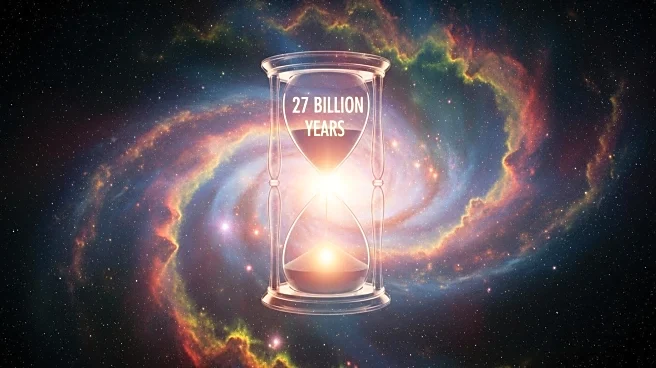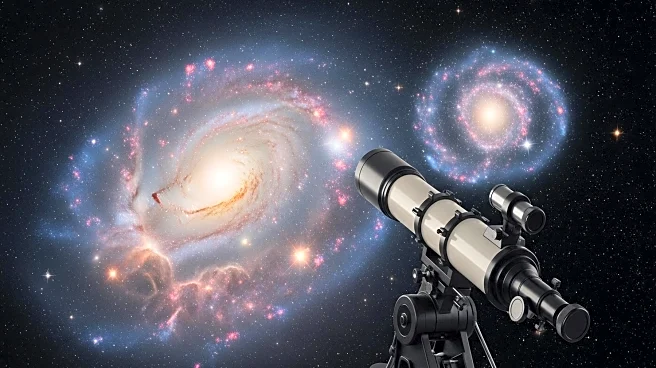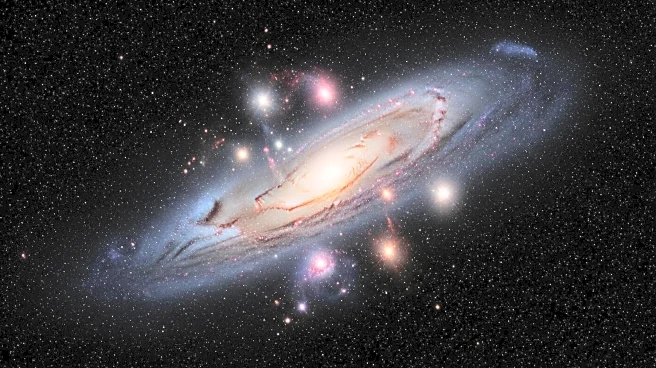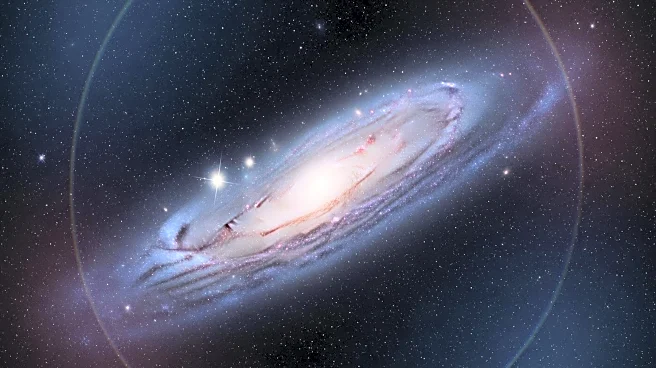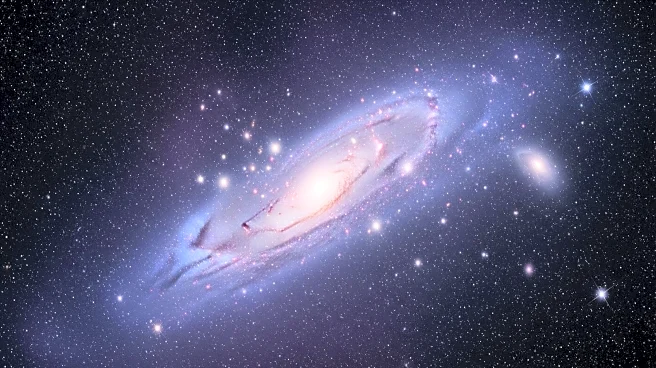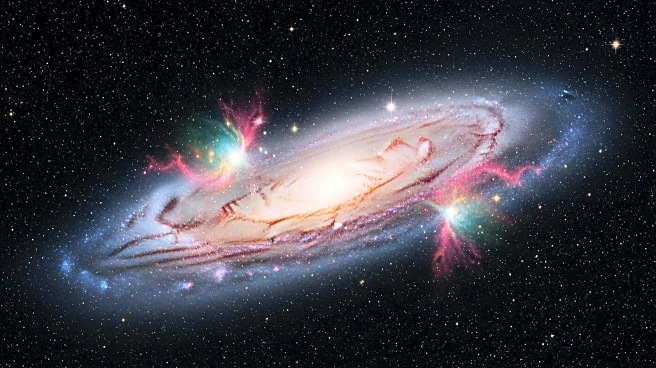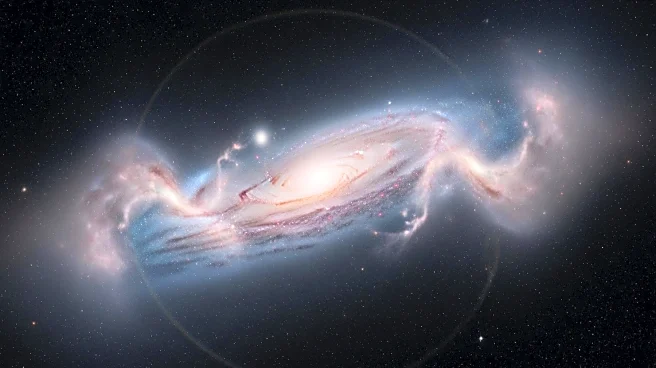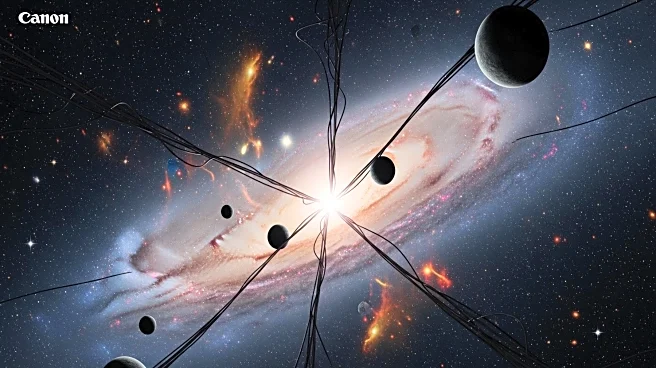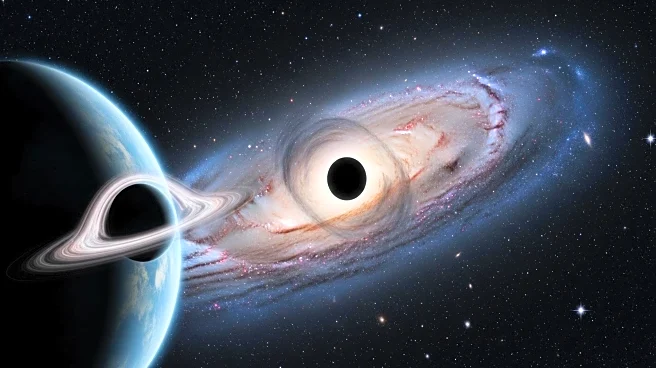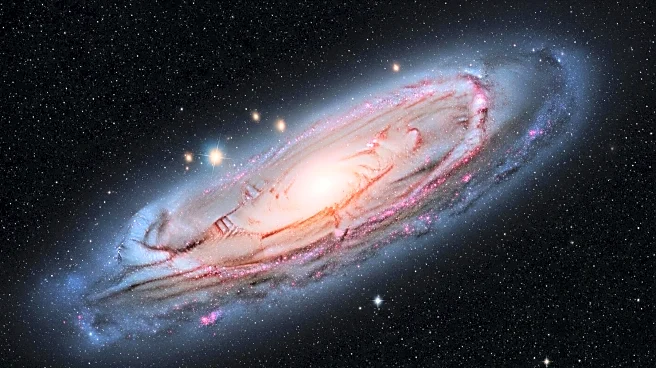What's Happening?
A recent study led by physics professor Rajendra Gupta from the University of Ottawa challenges the long-standing cosmological model that includes dark matter and dark energy. Gupta's research suggests that the universe may not require these invisible components, proposing instead that the universe is 27 billion years old, significantly older than the commonly accepted age of 13.8 billion years. The study introduces a model combining covarying coupling constants (CCC) and 'tired light' (TL) theories, which suggest that the constants of nature might change over time and that light loses energy as it travels vast distances. This model aims to explain cosmic phenomena without relying on dark matter or dark energy.
Why It's Important?
The implications of Gupta's study are profound, potentially altering the foundational understanding of cosmology. If validated, this model could reshape theories about the universe's expansion, the formation of galaxies, and the interpretation of cosmic signals. It challenges the necessity of dark matter, which has been a cornerstone of astrophysical research and has guided numerous space missions and scientific inquiries. The study could lead to new methods for measuring cosmic distances and time, impacting how scientists understand the universe's history and structure. This could affect future research directions and funding in astrophysics and cosmology.
What's Next?
The study's claims require rigorous testing and validation through independent observations and experiments. Researchers are expected to conduct tests comparing Gupta's model with existing cosmological data, including galaxy rotation profiles, gravitational lensing maps, and cosmic microwave background patterns. As scientific instruments improve, the accuracy of these tests will increase, providing clearer insights into the validity of the CCC+TL model. The scientific community will likely engage in debates and discussions to assess the model's implications and explore its potential to replace or complement existing theories.
Beyond the Headlines
Gupta's study raises ethical and philosophical questions about the nature of scientific inquiry and the assumptions that guide it. It challenges the scientific community to reconsider established beliefs and encourages openness to alternative explanations. The study also highlights the importance of questioning and testing scientific models, emphasizing the need for continuous exploration and adaptation in the face of new evidence. This approach could inspire a broader reevaluation of other scientific theories and models across various disciplines.
